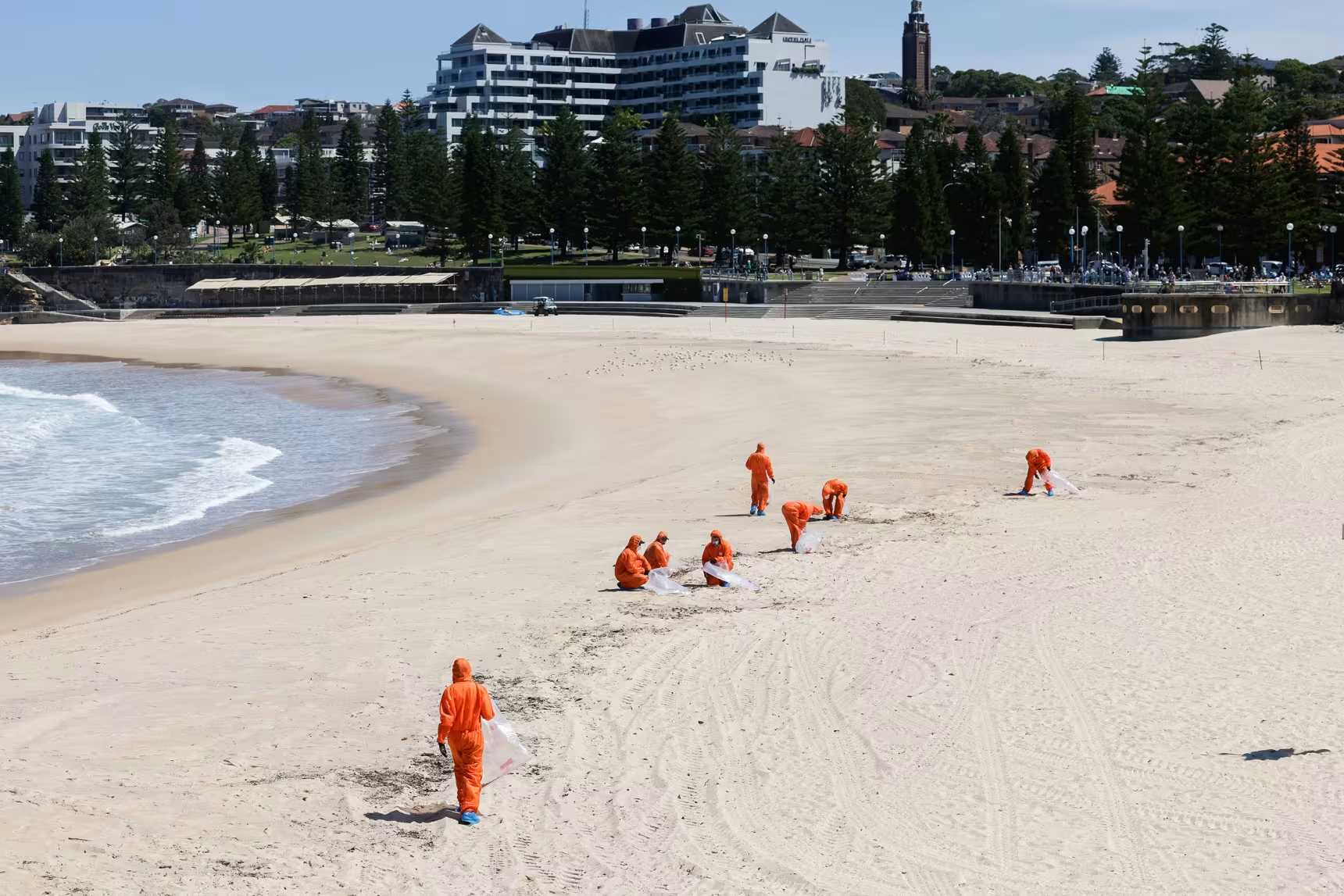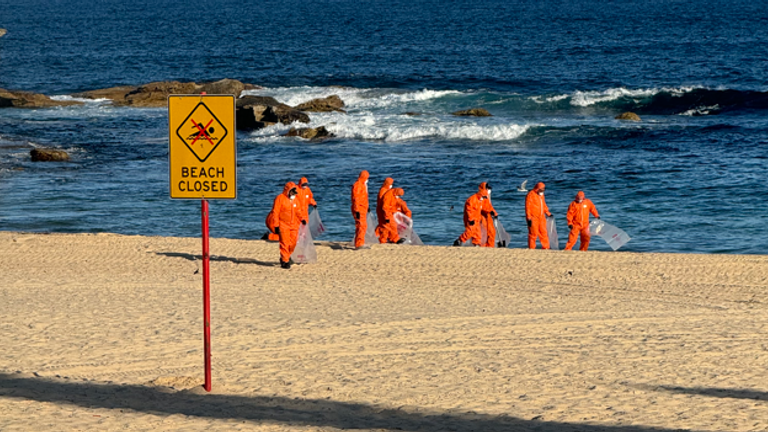Sydney’s renowned Bondi Beach and several other nearby beaches were closed on Thursday as authorities launched an investigation into mysterious tar balls that had washed ashore. This alarming discovery prompted swift action to safeguard beachgoers and the local environment.
The dark, sticky blobs, approximately the size of golf balls, were first spotted at Coogee Beach on Tuesday. This initial sighting led to a cascade of beach closures across the city’s coastline, affecting Bronte, Tamarama, Gordons Bay, Clovelly, and the northern end of Maroubra Beach. All these areas remain closed until further notice while cleanup efforts are organized.
Authorities have advised the public to avoid swimming near or touching the tar balls. The Randwick City Council, which oversees four of the impacted beaches, indicated that initial testing confirmed the presence of tar balls, which are typically formed when oil interacts with debris and water.
Mayor Dylan Parker emphasized the uncertainty surrounding the source of the debris. “We still don’t know what caused this situation, but we are committed to collaborating with relevant authorities to ensure public safety and restore our beaches,” he stated on Thursday.

The Environment Protection Authority (EPA) of New South Wales reported that similar tar balls had been identified at Congong, Frenchmans, Little Bay, and Malabar beaches. The agency is actively investigating the origin of the debris and assessing any potential risks to the community and the environment.
Currently, the precise origins and contents of the tar balls remain unclear. The EPA noted that extensive testing of various samples is underway but could not confirm the presence of hydrocarbons, the main components of petroleum products, despite reports from the Randwick City Council.
Describing the situation as a “chemical mystery,” Professor William Alexander Donald from the University of New South Wales commented on the complexity of the issue. Preliminary analysis conducted by UNSW researchers suggested that the tar balls likely originated from weathered oil, possibly stemming from a crude oil spill or natural seeps from the ocean floor.
“They are a product of oil released into the ocean, and based on our chemical assessments, it seems to be crude oil,” Donald explained.
The presence of these tar balls poses a serious threat to marine ecosystems and wildlife. They can disrupt the movement and feeding patterns of various species, including seabirds, turtles, and fish. Additionally, the toxic substances within the tar balls can leach into the surrounding water, further endangering marine biodiversity.
Professor Donald noted that the appearance of tar balls is not just an aesthetic issue but also has broader implications for Australia’s coastal reputation and its vital industries, such as fishing and tourism. “This situation jeopardizes the health of ecosystems that are crucial for our economy,” he stated in a news release.
While such tar balls are relatively uncommon in Australia, they have been observed in other regions, including beaches in California and the Gulf of Mexico following significant oil spills, such as the 2010 Deepwater Horizon disaster.
“There are still numerous unanswered questions regarding the composition of these sticky blobs,” Donald remarked. “It presents quite an analytical challenge.”
As the investigation continues, officials remain focused on gathering more data and determining the best course of action to address the situation. The community is urged to stay informed and follow guidance from local authorities as cleanup efforts progress.
Local residents and businesses are understandably concerned about the impact of the tar balls on beach activities and the potential long-term effects on the coastal environment. Efforts to resolve the issue will be crucial in restoring the beloved beaches to their natural state.
The city’s beaches are not only popular tourist destinations but also vital habitats for various marine life, making it essential to act swiftly and effectively. Ongoing collaboration among environmental agencies, researchers, and the city council will be key to understanding the full scope of the issue.
Authorities continue to emphasize the importance of community engagement and awareness in response to this environmental challenge. As the investigation unfolds, residents are encouraged to report any sightings of the tar balls and adhere to safety advisories.
In the coming days, results from further testing are expected to provide clearer insights into the origins and implications of the tar balls. The situation remains fluid, and updates will be communicated as more information becomes available.

